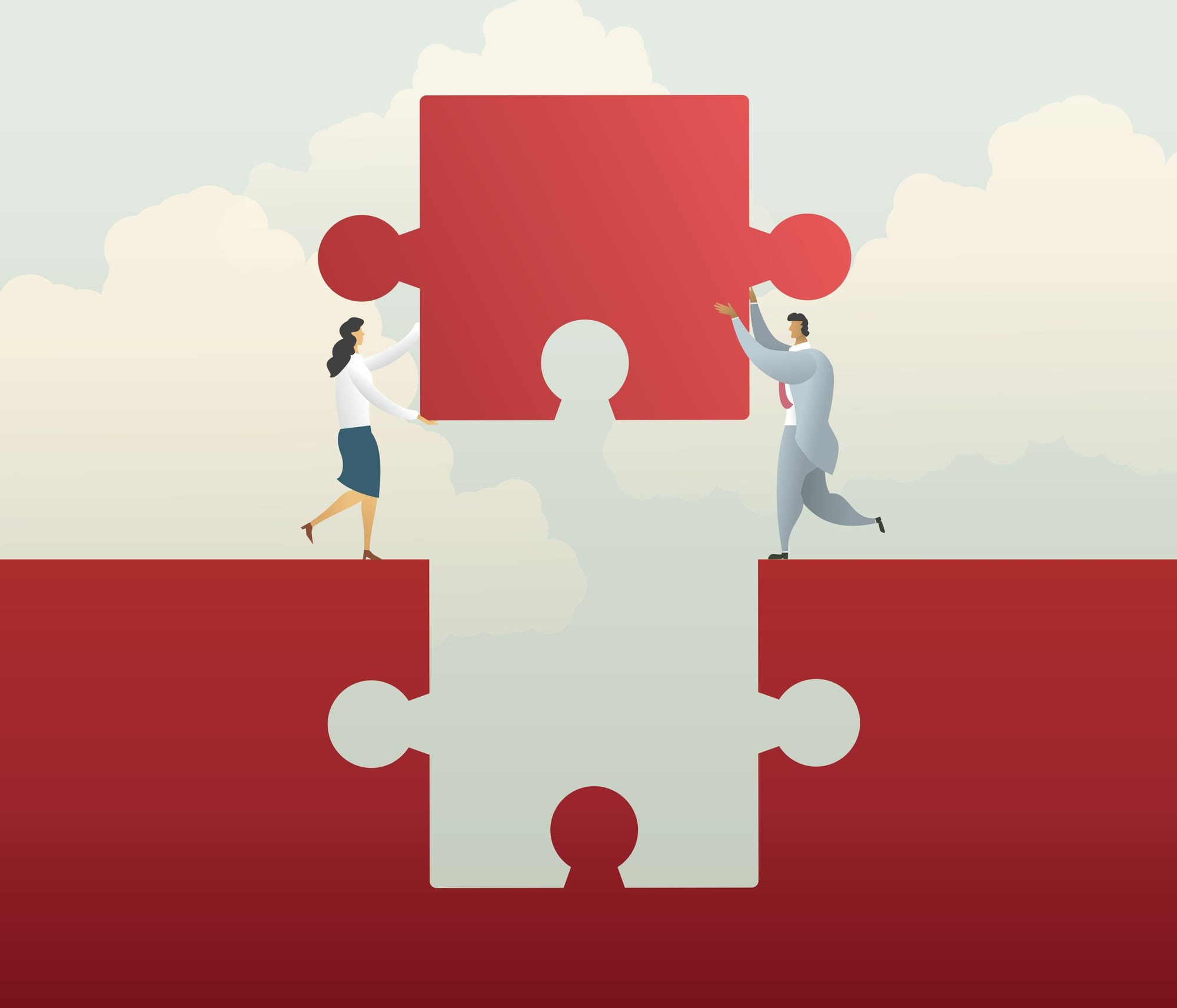How We Hire at Clarisights (Part 1)
Clarisights' hiring team give insight into building a hiring process that works for us.

Clarisights' hiring team give insight into building a hiring process that works for us.
Our hiring process has helped Clarisights grow from 12 to 70 people over the last few years. Using this simple yet effective three-stage (ish) method, we've interviewed hundreds of candidates worldwide across various functions. Hundreds of people have experienced our Culture Fit Interview (CFI), gone through our functional rounds, and received our feedback.
Each interaction shaped not just our team, but our reputation in the market. Each interview was an opportunity to show what Clarisights stands for, how we operate, and why we're different. While we can't hire everyone, we try to make sure that everyone who interacts with us has a positive experience. The process also led to the creation of our values document!
For us, having a clear hiring process that is rewarding for all involved is non-negotiable.
But it wasn't always like this! There was a time when Clarisights didn't have a formal hiring process...
Informal VS Formal Hiring
Clarisights started formalising our hiring process with quarterly goals in early 2022. Before this, our process was fairly free-form. A candidate would apply, one of our founders would see the application, maybe forward it to another founder, and then whoever was free would jump on a call. Different founders would interview candidates based on their availability and interest, and then the founders would get together—sometimes over Zulip, sometimes in person—and decide whether to make an offer.
It worked…sort of. But by early 2022, this approach was consuming too much time and lacked consistency. We'd spend hours interviewing without any structure to guide us. One candidate might have a technical deep dive with our CTO, while another might have a casual chat with our CEO about market trends. Some candidates would meet all three founders; others might meet just one.
The process was slow, haphazard and had very low throughput rates. What is worse, the candidate experience was uneven.
It became clear that we had to hire better and faster.
How to make the process rewarding
Just because we are a small startup does not mean that we can forgo having a process. However, we didn’t have the brand recognition of larger companies, nor did we have a massive budget to throw at recruitment marketing. However, we could control how we treated every single person who took the time to apply to Clarisights.
So, we set out to create a hiring system that could be run by a small team and was repeatable and consistent across all teams. This wasn't going to be a "set it and forget it" kind of thing. We needed to create a process that would evolve with us, something that reflected our values, and most importantly, something that actually worked.
We also wanted to track how we were doing. Which meant creating a new data-driven hiring process. That meant starting with the right tooling.
The Rights Tools
To minimise admin work, we brainstormed the ideal hiring process and identified the necessary tools. This might sound boring, but good tooling is essential for a high-standard hiring process. You can have the best intentions in the world, but if you're trying to coordinate interviews through email threads and tracking feedback in scattered Google Docs and WhatsApp chats... you're setting yourself up for failure.
A lot of smaller companies might think they can hack together a bunch of generalist tools to create a hiring pipeline. We tried this ourselves. And realised that, eventually, just maintaining this tool stack becomes an annoyance in itself.
So we decided, with some trepidation, to invest in an applicant tracking system (ATS).
After reviewing various providers, we chose Ashby as our ATS. This wasn't a decision we took lightly. We needed something that could grow with us, something that wouldn't require a full-time person just to manage, and something that made immediate, intuitive sense to everyone in the hiring process. So we auditioned, so to speak, a whole host of options before landing on Ashby.
As we put our tooling in place, we also had to put in place a broad heuristic for hiring that could work across functions and teams. Back in 2022, our primary hiring focus was getting enough great engineers through the door. But we knew that eventually we needed principles that could work across functions.
Plus, as the team was evolving into an international beast, we realised that the engineer-focused hiring model needed tweaking. In fact, we needed to start with something more fundamental: Culture.

Are You a Culture Fit?
Cultural fit can be a loaded term, so let’s be clear about what we mean. We spent hours and hours discussing what made someone successful at Clarisights. We looked at our existing team members who were absolutely crushing it. Not just the technically brilliant people, but people who made everyone around them better. The ones who customers and colleagues loved working with.
What did these people have in common?
We realised that successful employees at Clarisights shared common cultural traits. They are curious—always asking why things worked the way they did, always eager to learn something new. They collaborate naturally, understanding that the best solutions come from diverse perspectives. They are customer-centric, always thinking about how their work impacts the people using our product. And they show initiative, not waiting to be told what to do but identifying opportunities and running with them.
(In fact, all of this introspection led to the birth of Clarisight’s culture document! Which itself fed back into our hiring process.)
Suddenly, we realised something. Wait a second. Our best employees are not defined just by their functional competence. In fact, before everything else, they are defined by cultural alignment.
This realisation led to a fundamental shift in how we structured our hiring process. Thus, our hiring process starts with a Culture and Fit Interview (CFI). This isn't your typical "tell me about yourself" conversation. This round helps us understand if the candidate will enjoy working with us and if we'll enjoy working with them. It's a two-way street.
During the CFI, we explore candidate motivations. Why are they interested in Clarisights specifically? What made them choose their current career path? We dive into their career choices—not just what they did, but why they made certain decisions. And we ask about their interests outside work. Not because we're trying to be their friends, but because understanding someone holistically helps us understand how they'll fit into our team.
One inspiration was Zapier's hiring process. They’ve written extensively about their approach, and we found ourselves nodding along as we read their philosophy. But we didn't just copy-paste their process. We modified it to suit our needs, our culture, and our specific context as a company building in the data and marketing space.
Do you have the tech chops?
After the CFI, candidates go through two to three functional rounds specific to their roles. For example, software engineers have tech rounds focusing on data structures and systems design. These aren't trick questions or gotcha problems. We're trying to understand how they think, how they approach problems, and how they communicate their solutions.
For engineers, we typically have multiple technical rounds. The first focuses on data structures and algorithms—not because we're obsessed with LeetCode-style problems, but because understanding these fundamentals is crucial for the kind of scalable systems we build. The next round dives into system design, where we explore how they'd architect solutions for real problems we face at Clarisights.
But every role has its own journey. GTM candidates might work through a campaign analysis or discuss how they'd approach our go-to-market strategy. Customer success candidates present a solution to a case study, they might role-play difficult customer conversations, or analyse usage data to identify at-risk accounts.
Regardless of role, the approach is always the same: CFIs first, followed by at least two problem-solving rounds where we index not so much on the solution to the problems we present candidates, but the approaches taken and the choices made.
The Debrief
Once a candidate completes all these rounds, the hiring team regroups for a debrief session. Everyone who has interacted with a candidate revisit their feedback and their observations. These debrief sessions can get really heated. Interviewers often get really passionate about a particular candidate.
Debrief sessions are also reflexive. They help us calibrate as a team. When one interviewer says a candidate showed great problem-solving skills, we ask for specific examples. When another has concerns about communication style, we dig into what they observed.
Over the years, these debriefs have made us all better interviewers because we learn from each other's perspectives. They also make the process fairer for candidates. No one voice decides who is hired. It’s always a collective decision. Our experience is that this also creates a sense of ownership when the candidate eventually joins us. We really, really want new employees to succeed. And the seed for that desire is often planted in these debrief sessions.
Once a candidate has cleared all rounds, regardless of the final decision, we always call them in for a feedback session. For successful candidates this is a happy call. For the others... not so much.
When the feedback calls are negative we make sure it isn't a generic "we've decided to move forward with other candidates" boilerplate. We provide specific, constructive feedback. In our experience, this step of the process is what applicants enjoy the most. Whether they make it or not, they really enjoy getting feedback on their performance.
This transparency helps candidates understand our decision and leaves them with a positive experience.
Is it more work for us? Absolutely. Does it sometimes lead to difficult conversations? Yes. But we believe it's the right thing to do. These candidates invested their time in our process. They prepared for our interviews, and they took time off from their current jobs. They put themselves out there. The least we can do is provide candidates with honest feedback that might help them in their career journey.
A Formal Hiring Process is a Non-Negotiable
Building a hiring process from scratch has been one of the most rewarding challenges we've tackled at Clarisights. It's forced us to articulate our values, to think deeply about what matters to us, and to create systems that reflect who we are as a company.
Far too many startups and smaller companies think that a formal hiring process and hiring tooling are overkill. But our experience is that hiring is one of those business-critical things that you want to turn into a well-oiled machine that you can trust to deliver consistently. Operational excellence is not something just for "big companies". Remember, there are no prizes for making your life harder than it has to be.
Besides, the better your hiring process, the better the chances you will hire good people.
In future instalments of “How We Hire”, we'll explore specific interviews, breaking down what exactly happens in the CFI round. How do we actually assess curiosity in a one-hour conversation? What questions help us understand if someone is truly collaborative versus just saying they are?
And can you ever actually figure out "culture" in an interview?
If you're reading this and thinking, "I'd like to experience this process first-hand," we're constantly opening up new positions and constantly looking to hire great people. Check out our careers page.

